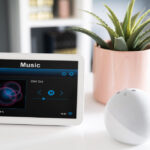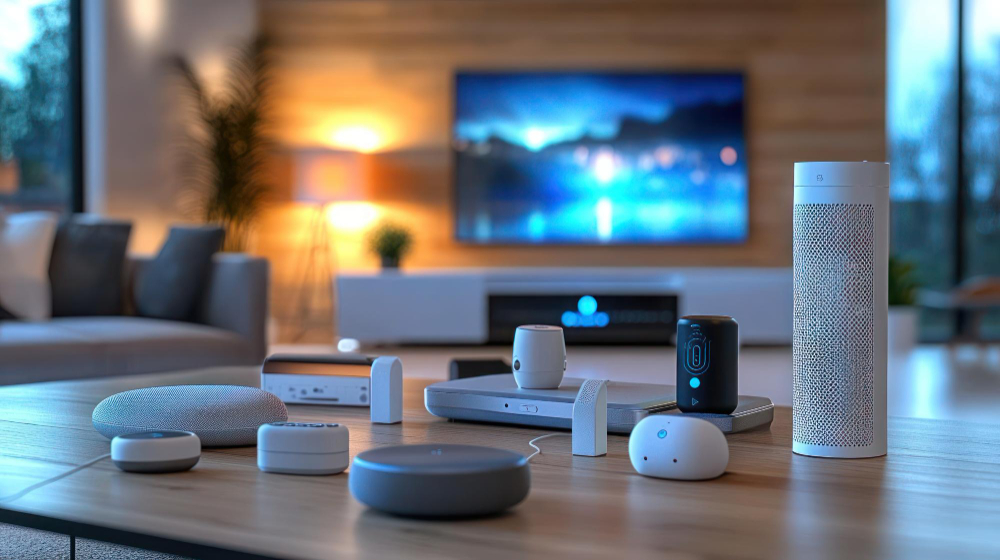DIY home automation projects offer a range of opportunities to enhance efficiency, security, and convenience in your living space. Implement smart lighting solutions with programmable bulbs and occupancy sensors to reduce energy consumption. Automated thermostat control can optimize heating and cooling based on your schedule, leading to significant savings. Integrating smart locks and security cameras guarantees robust home security, while voice-activated assistants streamline your daily tasks. Multi-room audio systems and energy monitoring solutions further elevate your home environment. Embrace these innovative upgrades, and you’ll discover more ways to revolutionize your home experience.
Key Takeaways
- Start with smart lighting solutions using smart bulbs for remote control and ambiance customization through color changes and programmable schedules.
- Implement smart thermostats to optimize heating and cooling, allowing real-time adjustments for energy efficiency and comfort.
- Set up automated security systems with smart locks and cameras for keyless entry, remote monitoring, and enhanced home security.
- Create a multi-room audio setup using wireless speakers for seamless music integration across different areas of your home.
- Explore energy monitoring systems to track consumption and identify high-energy appliances, helping to optimize usage and reduce costs.
Smart Lighting Solutions
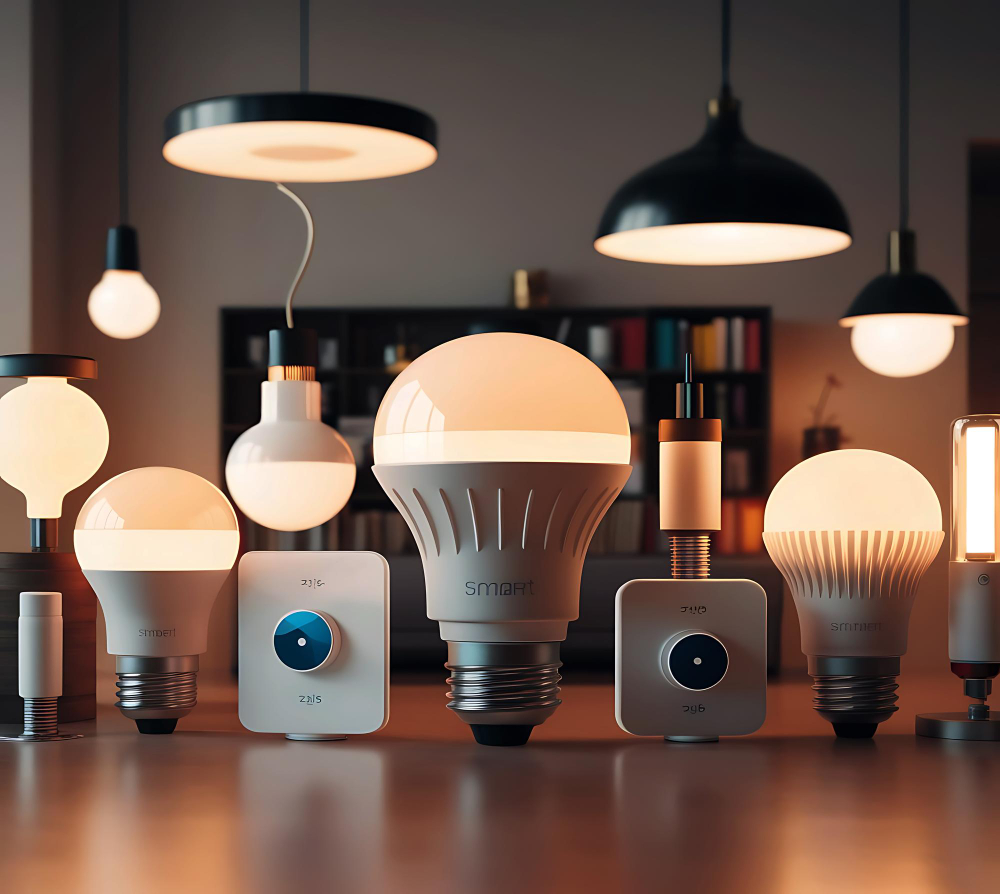
Smart lighting solutions are increasingly becoming a staple in modern home automation, allowing homeowners to enhance both energy efficiency and convenience. At the heart of these advancements is smart bulb technology, which enables users to remotely control lighting through smartphones or voice-activated systems. These bulbs utilize Wi-Fi or Bluetooth connectivity, providing seamless integration with existing home networks.
One of the most innovative features of smart bulbs is their color changing options, which allow users to customize the ambiance of their living spaces. By adjusting the hue and brightness, homeowners can create various moods suitable for different occasions, from vibrant gatherings to tranquil evenings. Additionally, many smart bulbs support programmable schedules, enabling lights to automatically turn on or off at designated times, thereby reducing energy consumption.
In addition to user-friendly interfaces, smart lighting solutions often incorporate sensors that detect occupancy, ensuring lights are only active when needed. This not only enhances energy efficiency but also extends the lifespan of the bulbs. As technology continues to evolve, the capabilities of smart lighting solutions will likely expand, making them an essential component of any modern home automation system.
Automated Thermostat Control
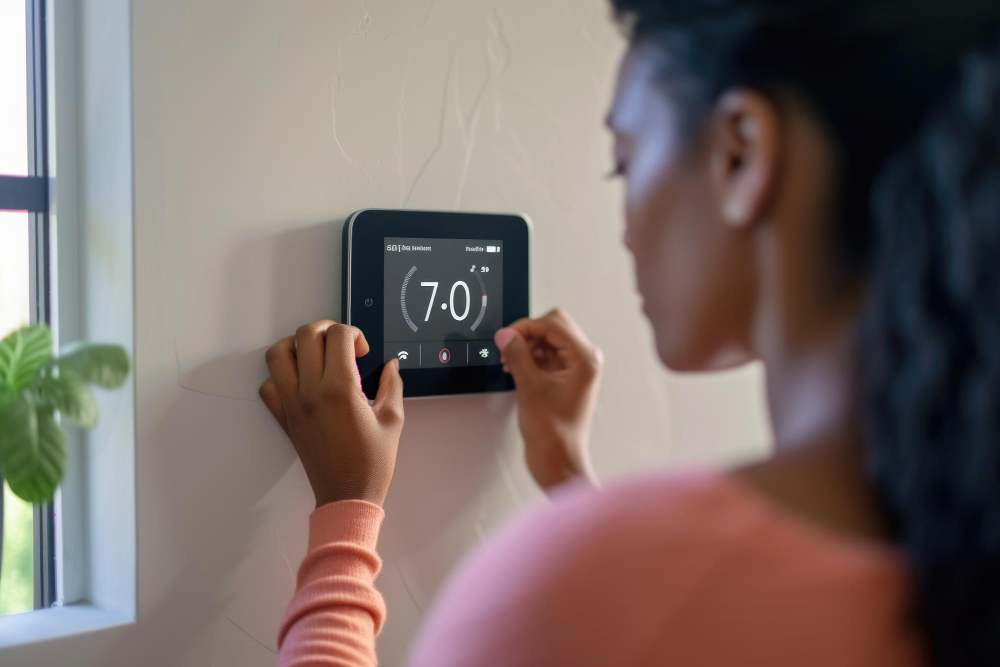
Automated thermostat control represents a significant advancement in home energy management, offering enhanced comfort and efficiency through precise temperature regulation. By integrating smart thermostats into your home automation system, users can benefit from features such as remote access, energy usage analytics, and adaptive learning capabilities. This section will outline the advantages of automation, provide an overview of installation steps, and explore various smart thermostat options available in the market.
Benefits of Automation
Implementing automated thermostat control offers significant advantages in energy efficiency and user comfort. These systems utilize advanced algorithms to learn user behaviors and preferences, optimizing heating and cooling schedules based on occupancy patterns. By adjusting temperatures automatically when the home is vacant, energy consumption is reduced without sacrificing comfort, resulting in substantial cost savings on utility bills.
The time-saving convenience of automated thermostat control cannot be overstated. Users can program their thermostats remotely via smartphone applications, enabling real-time adjustments from anywhere. This feature guarantees that homes are always at the desired temperature upon arrival, enhancing the overall living experience.
In addition to energy savings and convenience, automated thermostats contribute to enhanced security. By simulating occupancy through scheduled temperature changes, these systems can deter potential intruders, providing peace of mind for homeowners. Furthermore, many smart thermostats integrate with home security systems, allowing for seamless alerts and notifications if unusual temperature fluctuations occur, which could indicate a malfunction or security breach.
Installation Steps Overview
The process of installing an automated thermostat is a pivotal step toward realizing the full benefits of energy efficiency and user comfort. This installation involves understanding smart home basics and utilizing specific installation tools to guarantee peak performance.
Installation Steps Overview Table
| Step | Description | Tools Required |
|---|---|---|
| 1. Turn Off Power | Confirm the HVAC system is powered off for safety. | Screwdriver, Voltage Tester |
| 2. Remove Old Thermostat | Carefully detach the existing thermostat, taking note of wire connections. | Screwdriver |
| 3. Connect New Thermostat | Follow the wiring diagram provided with the new unit to connect wires correctly. | Wire Strippers, Pliers |
After connecting the new thermostat, restore power and configure your device according to the manufacturer’s instructions. Double-check all connections and settings to guarantee compatibility with your HVAC system. This meticulous approach not only enhances the installation process but also assures that your automated thermostat functions efficiently, paving the way for a seamless smart home experience.
Smart Thermostat Options
How can homeowners choose the right smart thermostat to enhance their automated control systems? Selecting an appropriate smart thermostat requires understanding the features that align with energy savings and personal preferences. A well-chosen thermostat can greatly reduce energy consumption while providing automated convenience.
When evaluating smart thermostat options, consider the following key thermostat features:
- Wi-Fi Connectivity: Allows remote access via smartphone apps for real-time adjustments.
- Learning Algorithms: Adapts to your schedule, optimizing temperature settings automatically.
- Energy Monitoring: Provides insights into usage patterns, helping to identify further savings opportunities.
- Compatibility with HVAC Systems: Guarantees seamless integration with existing heating and cooling setups.
These features not only enhance user experience but also contribute to considerable energy savings. By automating climate control, homeowners can maintain comfortable living conditions while minimizing energy waste. Ultimately, the right smart thermostat can lead to a more efficient home environment, reducing utility bills and promoting sustainable living practices.
Voice-Activated Assistants
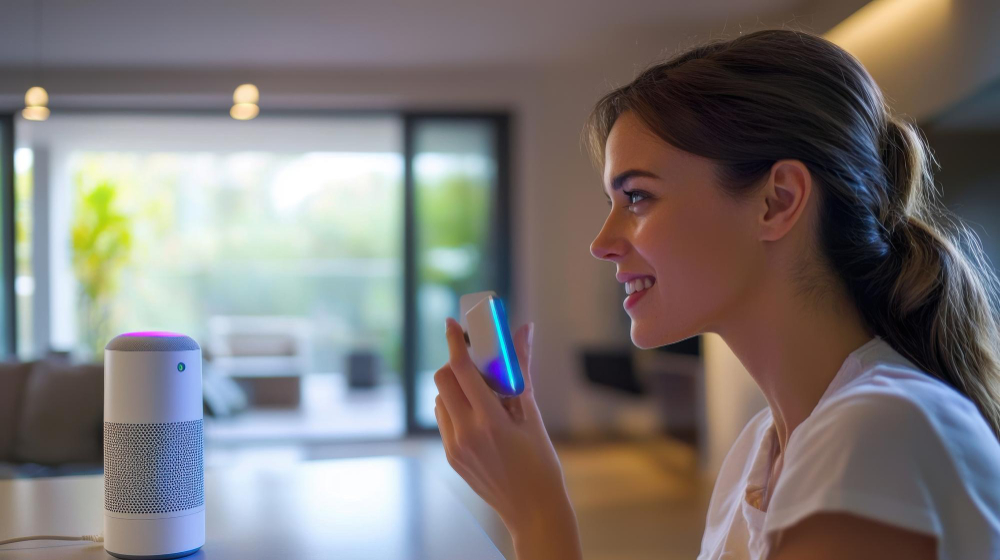
Voice-activated assistants have transformed the landscape of home automation by enabling seamless interaction with smart devices. Selecting the appropriate assistant is essential for ideal integration, as compatibility with existing technology can greatly enhance functionality. In addition, the ability to create custom voice commands allows users to tailor their experience, ensuring that the system meets specific needs and preferences.
Choosing the Right Assistant
Selecting the ideal voice-activated assistant is essential for optimizing your home automation experience. The right assistant not only enhances convenience but also guarantees compatibility with your existing devices. When evaluating your options, consider the following factors that cater to your user preferences:
- Ecosystem Integration: Choose an assistant that seamlessly integrates with the smart devices you already own, such as lights, thermostats, and security systems.
- Voice Recognition Accuracy: Look for an assistant that excels in understanding natural language and offers precise voice recognition, minimizing misinterpretations.
- Customization Options: Assess whether the assistant allows for personalized commands and routines tailored to your lifestyle, enhancing usability and engagement.
- Future-Proofing: Opt for an assistant that regularly updates its software and expands its capabilities, guaranteeing longevity and adaptability to emerging technologies.
Integration With Smart Devices
Integrating smart devices with voice-activated assistants is essential for creating a cohesive and efficient home automation system. This integration facilitates seamless control of various devices, enhancing user experience and promoting energy efficiency. Voice assistants, such as Amazon Alexa, Google Assistant, and Apple Siri, serve as central hubs that manage smart device compatibility across a diverse ecosystem, allowing for streamlined functionality.
However, while the benefits are substantial, automation integration challenges can arise. One primary challenge is ensuring compatibility among devices from different manufacturers, as not all devices adhere to universal standards. This can complicate the setup process and limit the potential for full automation. Additionally, variations in communication protocols—such as Zigbee, Z-Wave, and Wi-Fi—can hinder the smooth operation of interconnected devices.
To overcome these challenges, users should prioritize selecting devices that explicitly support their chosen voice assistant. Thorough research into compatibility lists and user reviews can mitigate integration issues. In addition, utilizing platforms like IFTTT (If This Then That) can enhance interoperability by creating custom automation commands, thereby bridging gaps between various smart devices and ensuring a more cohesive smart home environment.
Custom Voice Commands Creation
Creating custom voice commands for smart assistants can greatly enhance the user experience by allowing for tailored interactions that cater to individual preferences and routines. By employing advanced voice recognition techniques, users can create commands that streamline tasks and improve efficiency in their daily lives. Custom commands can be programmed to respond to specific phrases, enabling a more intuitive interaction with smart devices.
Here are a few custom command examples that illustrate the potential of personalized voice interactions:
- “Good morning”: Initiates a morning routine, adjusting the thermostat, turning on lights, and providing weather updates.
- “Movie night”: Dims the lights, lowers the shades, and launches a preferred streaming service.
- “Security mode”: Activates all security cameras and locks doors with a single command.
- “Play my workout playlist”: Starts a specific music playlist tailored for exercise sessions.
Security Camera Setup
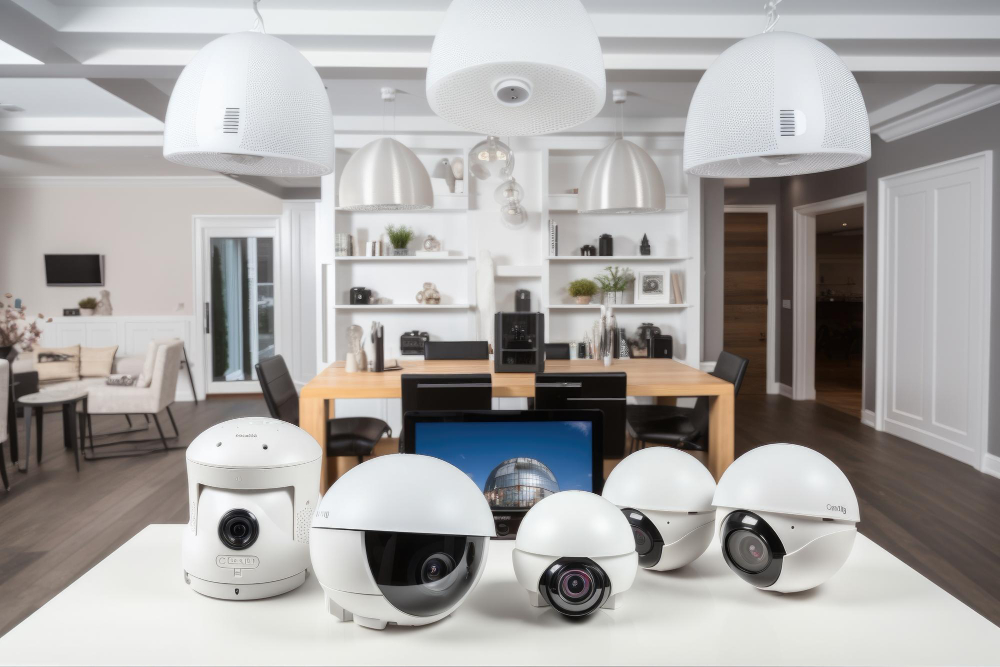
How can you effectively enhance the security of your home through a well-planned camera setup? Implementing a systematic approach to security camera installation can greatly deter potential intruders and provide peace of mind. Begin by evaluating the layout of your home to identify vulnerable areas such as entry points, driveways, and backyards.
When selecting equipment, consider wireless camera options for easier installation and flexibility. These devices typically connect via Wi-Fi, allowing for straightforward integration with your home network. Confirm the cameras have robust encryption to safeguard against unauthorized access.
Incorporate cameras with night vision capabilities to maintain surveillance in low-light conditions. Modern infrared technologies enhance visibility during nighttime, guaranteeing thorough monitoring regardless of environmental light.
Strategically position your cameras at heights that minimize tampering while providing a clear field of view. Use a mix of fixed and pan-tilt-zoom (PTZ) cameras for broader coverage.
Finally, integrate your camera system with a digital app for real-time monitoring and alerts. This holistic approach not only fortifies your home’s security but also empowers you with the tools to oversee your property remotely.
Smart Door Locks
After establishing a robust security camera setup, the next step in enhancing home security involves the installation of smart door locks. These innovative devices offer significant advantages over traditional locks, including enhanced convenience and security through keyless entry and remote access capabilities. Smart door locks can be easily integrated into your existing home automation system, allowing for seamless control and monitoring.
Key features of smart door locks include:
- Keyless Entry: Eliminate the need for physical keys by using codes, biometrics, or smartphones to open your doors.
- Remote Access: Grant or revoke access to your home from anywhere using a mobile app, ensuring you can manage who enters your space even when you’re away.
- Activity Logs: Monitor who accessed your home and when, providing an added layer of security and peace of mind.
- Integration with Other Devices: Sync your smart locks with security cameras, alarms, and lighting systems for a thorough home automation experience.
Home Theater Automation
Home theater automation transforms the traditional viewing experience into a seamless, immersive environment. By integrating advanced technologies, users can control every aspect of their home theater system through a centralized interface, enhancing convenience and functionality. A critical component of this automation is projector control, which allows for precise adjustments to image settings such as brightness, contrast, and zoom, ensuring ideal viewing conditions for any content.
Incorporating screen automation further elevates the experience. Automated screens can be programmed to lower or raise at the touch of a button or set to respond to specific triggers, such as the start of a movie or the dim
Energy Monitoring Systems
As technology continues to evolve, so does the capability to monitor and manage energy consumption within residential spaces. Energy monitoring systems leverage advanced sensor integration and cloud storage to provide homeowners with a thorough overview of their energy usage. These systems deliver real-time feedback, allowing users to make informed decisions that lead to substantial cost savings.
Key features of innovative energy monitoring systems include:
- Device Tracking: Identify which appliances consume the most energy.
- Data Analysis: Analyze historical energy usage patterns to optimize consumption.
- User Interfaces: Intuitive dashboards enable easy interaction and visualization of energy data.
- Alerts Notifications: Receive instant alerts for unusual energy consumption, ensuring proactive management.
Many systems are complemented by mobile apps, offering remote access and control over household energy consumption. This connectivity fosters a deeper understanding of energy behavior, empowering users to implement strategies that enhance efficiency. By harnessing the power of technology, homeowners can reduce their carbon footprint while enjoying the benefits of increased comfort and affordability. With a growing emphasis on sustainability, energy monitoring systems represent a crucial component of modern home automation projects.
Automated Blinds and Curtains

Convenience and energy efficiency define the allure of automated blinds and curtains, which have become integral components of modern home automation systems. These smart window treatments not only enhance aesthetic appeal but also contribute notably to energy conservation by regulating natural light and temperature within a space.
Automated blinds and curtains can be controlled via various remote control options, including smartphone applications, voice-activated assistants, and dedicated remote devices. This flexibility allows users to adjust their window treatments from anywhere in the home, optimizing comfort and privacy without manual intervention.
Advanced models incorporate sensors that respond to environmental conditions, such as sunlight intensity and temperature fluctuations, automatically adjusting to maintain ideal indoor climates. Integration with existing home automation platforms enables users to program schedules for opening and closing, ensuring that their spaces remain well-lit during the day while minimizing heat loss at night.
Furthermore, innovative designs featuring smart fabrics enhance the functionality of these systems, allowing for increased durability and ease of maintenance. By investing in automated blinds and curtains, homeowners can achieve a sophisticated balance between comfort, style, and energy efficiency, making them a worthwhile addition to any smart home ecosystem.
Multi-Room Audio Systems
There is a growing demand for multi-room audio systems that seamlessly integrate with modern home automation setups, allowing users to enjoy high-quality sound throughout their living spaces. These systems leverage advanced audio distribution technologies to create a cohesive listening experience, regardless of the room.
Wireless speakers play a pivotal role in this evolution, providing flexibility and ease of installation. Unlike traditional wired systems, wireless solutions eliminate the need for extensive cabling, enabling users to position speakers wherever desired. Key features to take into account include:
- Network Compatibility: Verify your system supports Wi-Fi and Bluetooth for versatile connectivity.
- Multi-Platform Integration: Choose systems that work with popular music services like Spotify and Apple Music.
- User-Friendly Control: Look for apps that allow seamless control of audio across different rooms.
- Scalability: Opt for systems that can easily expand with the addition of more speakers or zones.
With these components, DIY enthusiasts can create a sophisticated audio environment that enhances both entertainment and ambiance, making every corner of the home a potential soundscape.
Frequently Asked Questions
What Tools Do I Need for DIY Home Automation Projects?
To undertake home automation projects, essential basic tools include screwdrivers and wire strippers. Advanced tools such as microcontrollers, soldering equipment, and network analyzers enhance functionality, enabling seamless integration of smart devices and improved system performance.
How Do I Ensure Device Compatibility With My Existing System?
To guarantee device compatibility with your existing system, meticulously review device specifications and confirm adherence to relevant protocol standards. This diligence will facilitate seamless integration, enhancing the overall functionality and interoperability of your technology ecosystem.
Can I Integrate DIY Projects With Professional Home Automation Systems?
Integrating DIY projects with professional home automation systems offers significant benefits, such as customization and cost efficiency. However, integration challenges may arise, including compatibility issues and varying protocols, requiring careful planning and technical expertise for seamless operation.
What Are the Best Platforms for Controlling DIY Home Automation?
Approximately 70% of households now utilize smart technology. Leading platforms for controlling smart hubs include Home Assistant and OpenHAB, which leverage open source platforms to provide customizable, innovative solutions for seamless home automation integration and enhanced user experience.
How Can I Troubleshoot Common Issues in Home Automation Setups?
To troubleshoot common issues in home automation setups, identify common device failures and apply systematic troubleshooting techniques. Check connectivity, verify configurations, and consult logs to isolate problems, ensuring ideal performance and reliability of the automation system.
Conclusion
To sum up, the integration of DIY home automation projects greatly enhances the convenience and efficiency of residential living. The global smart home market is projected to reach $174 billion by 2025, highlighting the increasing consumer interest in automated solutions. This trend not only reflects a growing commitment to technological innovation but also underscores the potential for energy savings and improved security. Consequently, engaging in these projects can lead to a more sustainable and secure home environment.



